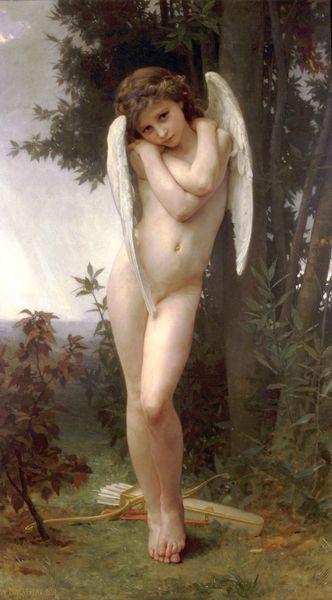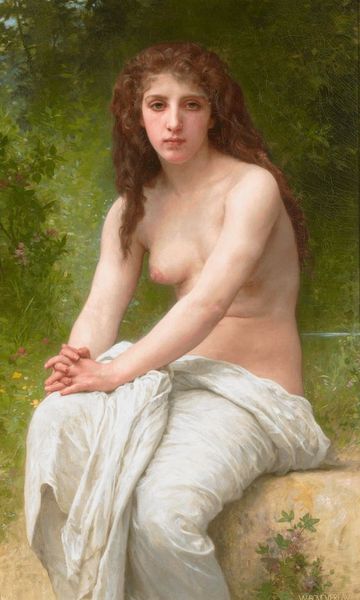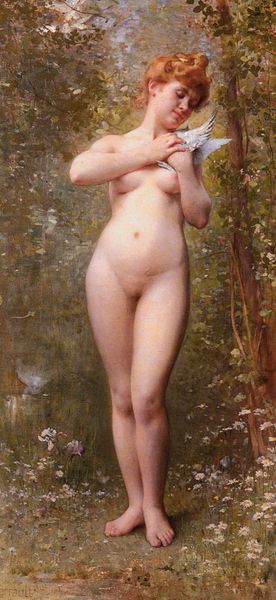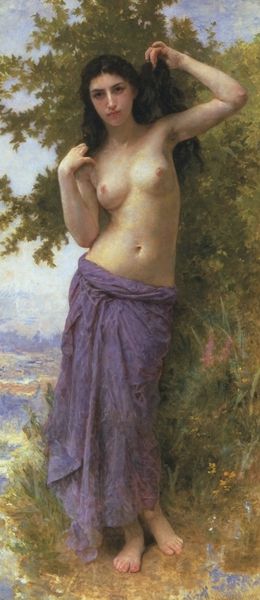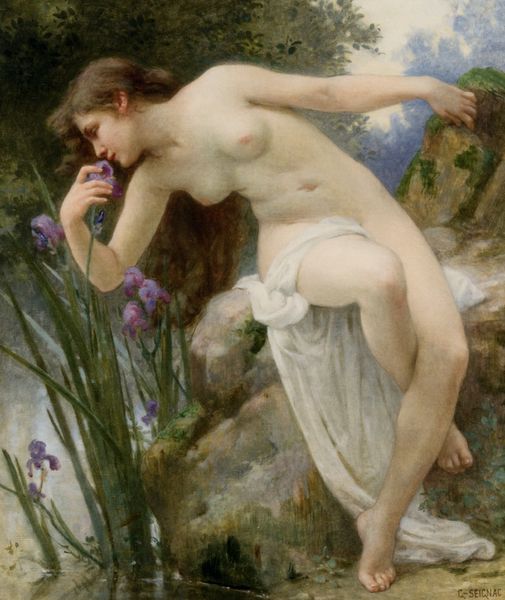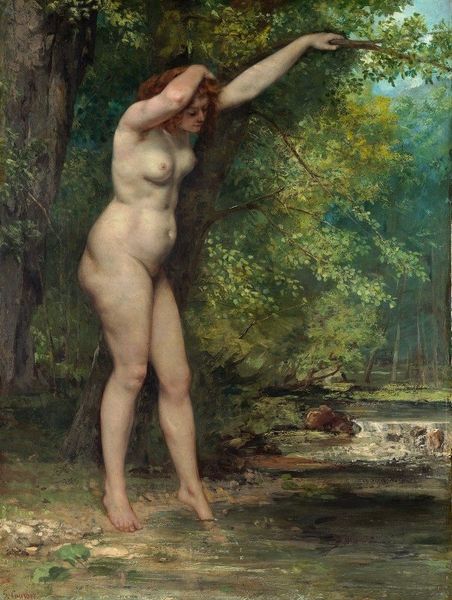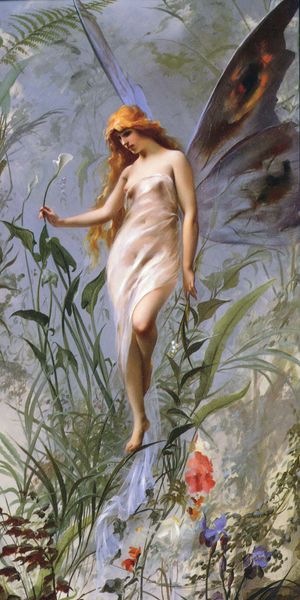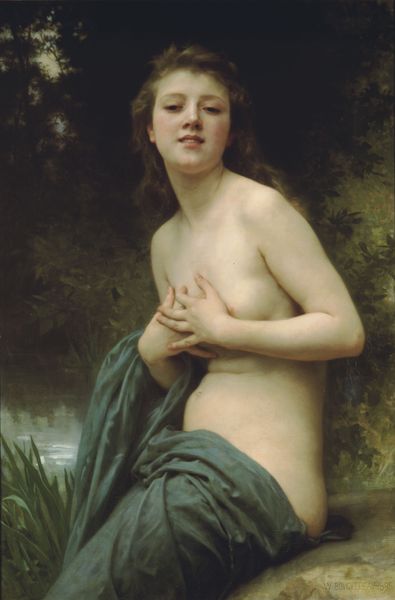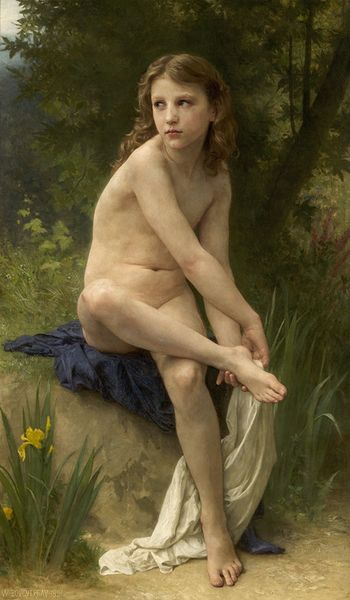
Dimensions: 152.5 x 89 cm
Copyright: Public domain
Editor: William Bouguereau’s "After the Bath," created in 1894 using oil paint, presents a nude woman in a landscape setting. The scene feels serene, but there’s also something a little unsettling about the figure's exposed vulnerability. What do you see in this piece? Curator: It is vital to consider the socio-political context of Bouguereau's time. While seemingly innocent, works like this perpetuate the male gaze and construct a specific, often unattainable, standard of beauty for women. Who defines the 'ideal' female form and for what purpose? How does this artwork contribute to the historical objectification of women's bodies? Editor: So, rather than focusing on the technique, you're more interested in its effect on how women are perceived? Curator: Precisely. While technically skilled, Bouguereau's paintings reinforce power structures. His idealized nude ignores the realities of women's lives in the late 19th century. Consider, too, the viewer implied by the painting's composition: who is invited to look, and whose gaze is being privileged? Editor: That’s a perspective I hadn’t really considered before. I was initially just thinking about the artistic style and its technical skill. Curator: Examining the history and implications of representations such as this is vital. How can we use art to challenge existing power dynamics and promote a more equitable representation of all bodies? Is simply depicting nudity enough to consider something “art,” or are we to interrogate it from a socio-historical perspective? Editor: I see now. It's more than just a pretty picture; it's part of a bigger cultural conversation. I’ll definitely approach art differently from now on. Curator: That’s the intention; to move from being passive spectators into active participants capable of critiquing the world around us.
Comments
No comments
Be the first to comment and join the conversation on the ultimate creative platform.
